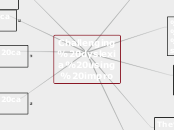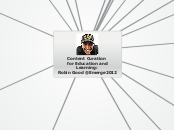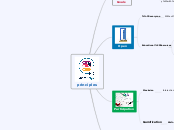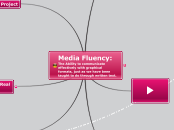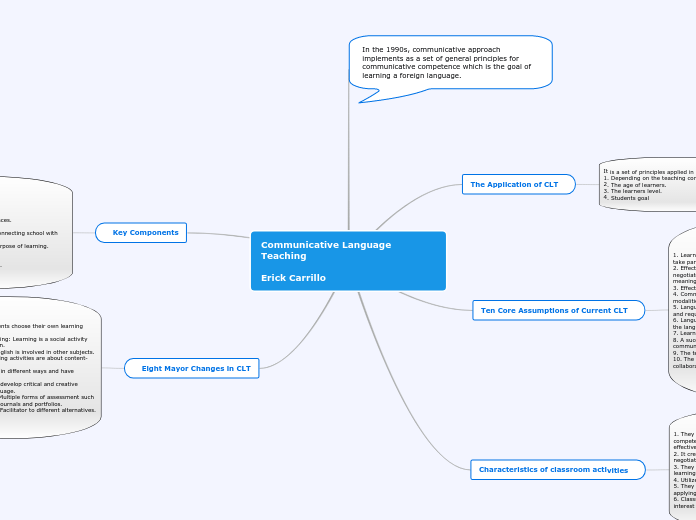Challenging dyslexia using impro
4° capitolo
Conclusions
Impro Benefits:
-great potential hidden behind each impro-exercise
-positive effects on sts: sts improve their English
-a learner-centred teaching and sts' success
Positive consequences using Impro:
-sts improve their English and appreciate the games but only if teachers demonstrate to appreciate it.
The big challenge for teachers:
-to adapt to each sts' characteristics
-to promote different intelligence and learning styles, different approaches.
-to make sts aware of their acquired competences.
3° capitolo
Tecniche di Improvvisazione Teatrale
-un valido strumento per promuovere l'esposizione orale della lingua straniera, l'interesse e lo studio della disciplina.
Definition:
- a stage performance/interactive relationship between actors and audience.
-actors create a dialogue, setting and plot without a formal rehearsal.
Skills required:
-listening
-conscious awareness of others
-spontaneity
-social comprehension
Origin:
-Italy 16th, 17th, 18th century)
-Dudley Riggs and Viola Spolin
Rules, props, costumes and setting:
-well-defined by actors
The result:
-suitable for the Net Generation (they appreciate face-to-face interaction, like being protagonists of their learning)
-humorous and unrealistic scenes
-great excitement
Human beings underestimate themselves and do not realize that they 'improvise' all the time.
The Benefits of impro:
-learning spontaneity and intuition
-deep learning activities in a learner-centred environment
-critical thinking and creativity
-teachers teach to adapt, adjust and listen to their schoolmates.
Gibberish
Purpose:
-to give sts the chance to ask questions
-to increase sts' ability to communicate without the fear of making mistakes or being evaluated.
Time required:
-3/4 ms (activity)
-10 ms (questions and final discussion)
Procedure:
-the 1st student pretends to be an 'expert' of a topic and speaks in a nonsensical language.
-the 2nd student translates the 'gibberish' into English and vice versa
-the other sts ask 'experts' specific questions, make them clarify the accuracy of the information and finally try to translate through voice and body language the 'nonsensical language'.
Freeze tag
Purpose:
-to assess the sts's knowledge
-to build up a storyline based on a situation
-to make sts have a deeper understanding of a given topic, to reinforce motivation and leadership
-to encourage discussion, team-work and creativity.
Time required:
-3/4 ms (activity)
-10 ms (questions and final discussion)
Procedure:
-The teacher's explanation of the topic to the sts.
-Brainstorming activity: the teacher asks sts where a certain situation may occur and listens to their responses.
-the teacher asks sts to define the type of relation between two people in a certain situation and to give reasons for it.
The 1st student begins the story saying:
'Yes..and..', the 2nd student intervenes 'freezing' the actions and taking it to another direction.
Expected outcomes:
-the teacher hopes sts stand in different physical positions and that their faces show different emotions (anger, happiness, sadness, etc..)
Speech Tag
Purpose:
-to assess the sts's knowledge and skills according to a reading assignment.
Main objectives:
-to increase spontaneity, a positive atmosphere
- to foster sts to speak without the fear of making mistakes
Time required:
- 10 ms (activity)
- 10 ms (questions and final discussion)
Procedure:
-the teacher chooses a topic and writes it on the blackboard.
-five sts come in front of the class: the 1st student stands in a horseshoe shape. When the 1st student says something, another one responds tagging him/her (touching the schoolmate's shoulder) and continues the story.
One word a time
Purpose:
-to review material
Main objectives:
-to see how well the sts identify the specific details associated with each component
- to see how the sts apply behavioural changes by telling a story
-to make the sts reflect on the game, to check their ability to summarize the content at hand
Time required:
-5/10 ms (activity)
-10 ms (questions and final discussion)
Procedure:
-the sts build up 5 columns on a piece of paper identifying the 5 key-components of their topic
-the 1st student says a word, the 2nd one goes on telling another one and the 3rd student continues adding another word
-the teacher checks that every students participate, encourages speed and eye-contact
Moreover, the teacher does not correct any sts' mistakes
Debriefing Questions:
-five sts answer and the rest of the class listens observing the correctness and evaluations the work of the group.
2° capitolo
Ruolo della 'Rete' (psicologi, insegnanti e genitori) :
garantire il successo formativo dello studente dsa ed un futuro sereno.
1° capitolo:
Cos'è la dislessia:
-difficoltà e potenzialità di uno studente dsa
Ruolo della rete:
-collaborazione SCUOLA-FAMIGLIA
Testimonianza personalità importanti del mondo dello spettacolo che soffrono di disturbi dell'apprendimento.
The role of the 'Network'
-Reaching the potential of dsa sts instead of simply labelling them as 'dyslexic'
-Respect one another
-Work together towards a common aim: the student
-Share ideas/opinions
The consequences of a bad cooperation of the 'Network'.
When the 'Network' does not work together:
- parents and teachers do not respect one another
-do not talk together
- parents and teachers simply prefer ignoring the problem
The dsa student is left alone to face problems.
The role of adults
They may feel:
-lonely
-discouraged
-perplexed
-frustrated
-powerless
Facing disabilities is really tiring:
-human beings refuse to see in other people the same disabilities felt/perceived inside themselves
The role of teachers.
-Being aware of each individual's need
-Giving more time, if necessary
-Encouraging and building confidence
-Ensuring a successful school career and a life full of satisfaction
'Normal' sts vs dsa sts.
-Similar behaviour and difficulties
-Teaching and learning strategies may be appropriate for both.
'" Learners with dyslexia are first and foremost learners!" (M.Thomson)
-Dyslexic does not mean being ill.
Dsa Students' skills
Dsa students are talented since they have:
-excellent oral skills
-a strong awareness of the environment
-a great ability to relate movement to speech
-intuition and perception
-an acute observation
What is dyslexia?
'Dyslexia is when there is a differential of two or more years between literacy skills and chronological age, assuming average or above intelligence and general cognitive ability'.
'A slight disorder of the brain that causes difficulty in reading and spelling, for example, but does not affect intelligence.'
Bad problems at school
-If left alone, school may become a 'nightmare' for dsa sts.
-Teachers may have to face behavioural difficulties with them.
For being successful
-Value themselves as well as others
-Accept that failure may happen along the way
-Be positive
-Work with the 'Network', schoolmates.
-Give space to dsa voices (feeling, aspirations, etc)
-Create a suitable syllabus and planning
-Be patient
Main problems at school
-Fear of new situations
-Disorganization
-Confusion
-Sense of not being taken seriously by teachers
-Frustration
-Anger
-Shame
-Lack of self-esteem/confidence
